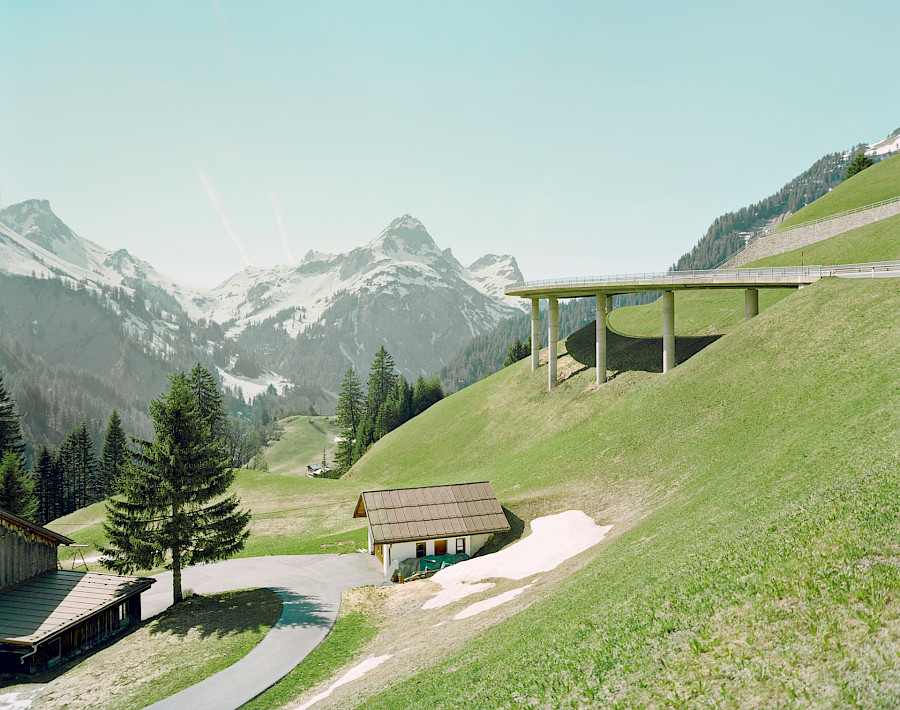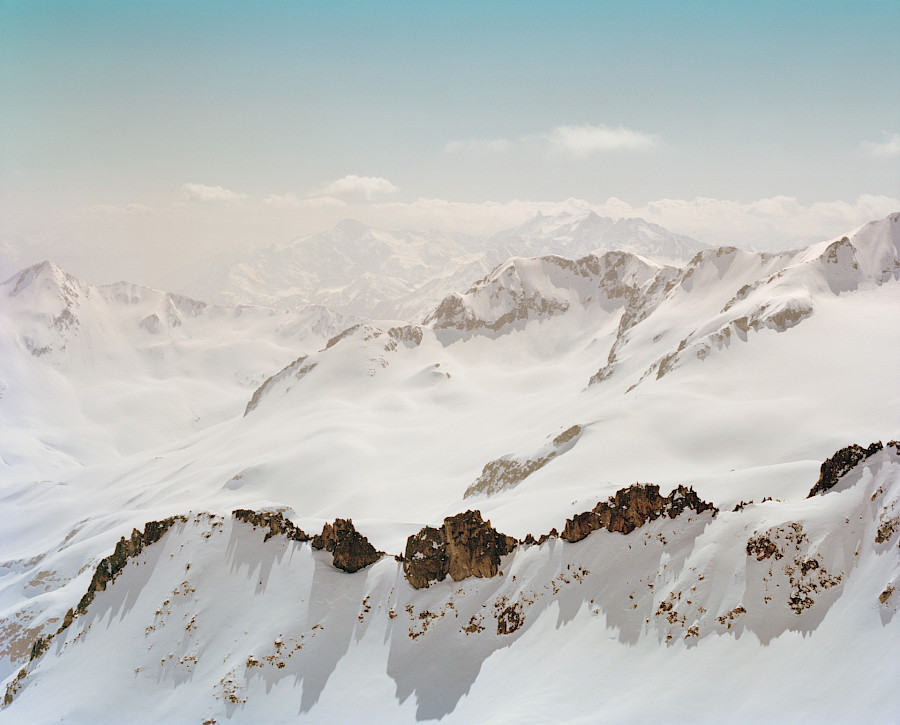











‘Hydroelectric Dams the Future
of Power in Switzerland'
HIGH-POWERED
‘Hydroelectric Dams the Future of Power in Switzerland'
Switzerland is a contained country. It’s contained physically by mountains that cut it off from the rest of Europe. It’s controlled psychologically through a management of the economy, borders, and land gives it an identity that sets it apart from its immediate neighbours. It’s a country that sits on the sidelines during the wars that have plagued European history, that prospers from historical threats of conflict by providing a safe haven for businesses, for finances, for information. Switzerland is a safe place.
That idea of safe containment extends to the the Swiss landscape. It’s hemmed in by rivers and moutains, by winter snows, and mountain glaciers that loom over the valleys below. The alpine landscape of Switzerland is a hostile environment, the spring melt from the winter snows threatening to inundate the prosperity of the valleys below.
There to contain these alpine threats are the dams of Switzerland. The largest of these is the Grand Dixence Dam. Rising 935 feet above the river floor, the dam both regulates the water flow to the valleys below and also generates some of the hydroelectric power that makes up almost 60% of Switzerland’s energy needs.
The Grand Dixence is a gravity dam, a dam where the mass of concrete holds back the lake that has gathered above. The vastness of the human enterprise that built this dam becomes apparent as you view it from downstream. It’s immense, a 15 million ton triangular block holding back not just the water, but also the world of which it is part. The dam divides the valley floor from the mountains above; it holds back the waters, but also creates a barrier between the valley and the cold barren walls of the mountain slopes above.
The dam wall is where mountain meets water and water meets dam. The geological meets the human, as alpine rock formed over millions of years by prehistoric geological thrusts comes up against concrete made in pre-shaped moulds. This is where the illusion of control begins to shift. Perspectives change as you move into the mountains. The dam becomes insignificant and small, a plughole facing up against the immensity of the Alps.
Go upstream from the dam, human habitation fades away, and the wild nature of the mountain world becomes apparent. From the edge of the dam, the glacial blue waters extend into a valley that bends into the distance. The mountains here form a monumental basin to feed a lake that is long and narrow, following the contours of the mountains on either side. To walk into these mountains is to enter another world, and as the dam becomes distance so it fades into insignificance. The wonder is the nature that surrounds you; the roar of waterfalls gushing snowmelt into the lake below, the shimmer of that lake in the alpine breeze, the rockfaces that have been weathered by wind and rain for millions of years.
Scale shifts our understanding, and so does time. These mountains were formed hundreds of millions of year ago, thrusting upwards as the African and Eurasian tectonic plates collided. More recently the landscape has been shaped by glacial advances and retreats of successive ice ages, the last of which ended 10,000 years ago.
In the mountains, time is measured in millions of years. On a human level, in the construction and maintenance of the dams, time is measured in decades. In the mountains, we face our own mortality, and the mortality of whatever we construct. That is built into dams that are made by engineers, scientists and geologists who are all too aware of the power of the earth to shift, to thrust, to move.
That idea of the insignificance of humanity, the power that nature holds over humanity is entwined in how we think about and see these mountains. The painting An Avalanche in the Alps by Philip James De Loutherbourg exemplifies the sublime power of nature to enthrall and terrify us with a combination of beauty and power. It’s a power that can kill, and when it does there is nothing we can do about it. However much we may try to contain the threats of the world around us, we are always on the precipice.
Our essential powerlessness is still apparent in the way that we experience dams today, dams which are not just places to hold back water, but also serve as places where we can stand on the edge of nature and wonder what would happen if…
The apparent fragility of dams like Mauvoisin and Lac D’Emosson emphasise this powerlessness, their delicate arched walls containing millions of cubic metres of water by redirecting it to the mountain walls. Here, nature does half the work.
These are dams where sightseers peer over railings into the depth of the waters below, they drive up hairpin bends and ride in funicular railroads to sit in canalside restaurants which lean out over the water’s edge. They climb the walls of the dam like human ants, they wander to the lake’s edge, and stare into the waters like aliens in an unencountered land. The dams, their pathways, their interiors, their engineering are part of the human world. Move just a little distance away, and a different reality envelopes you, a reality that is harsh and unforgiving. It’s a reality that moves to a different rhythm, one where the human and the natural meet and the human comes out second best.
The harshness of that reality becomes apparent when you view the changing function of the dams. While today the dams supply around 60% of Switzerland’s energy, the aim is for this to increase in the future as the nation decommissions its nuclear power stations.
Hydroelectric power is regarded as clean and safe, solar power supplied in liquid form, but the supply is variable, dependent on the seasons, on snowmelt and the climate of the mountain climate to which it is tied.
As the climate changes and winters become warmer, lake water levels are going up due to early snow melt and water from receding glaciers. Existing dams have been enlarged to hold back the increased water volume and new dams are in the pipeline to cater to growing energy needs and increased water supply.
But the future also comes with threats. Reduced winter snowfall will lead to falling lake levels, climate change will lead to glacial collapse and an increase in the sediments that block the spillways and destroy the turbines that generate the power that the world consumes so readily.
This is Switzerland, however, and all of these things are under consideration. Everything is always under consideration. Safety is paramount, security is paramount, the waters will be contained, the energy managed and the world will be right. The cow bells will ring, the wind will whistle gently, and the waters will sparkle on the dam lakes of the Swiss Alps.


